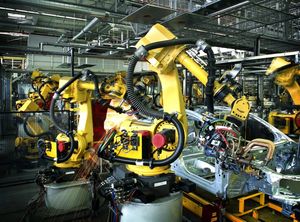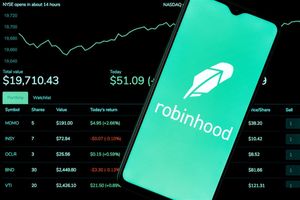
While the relentless buzz surrounding Artificial Intelligence (AI) continues to dominate headlines and captivate investor imagination, a deeper look into the strategies of the world's leading technology behemoths reveals a nuanced and far more diversified growth narrative. Companies like Apple (NASDAQ: AAPL), Amazon (NASDAQ: AMZN), and Tesla (NASDAQ: TSLA) are not solely placing their bets on AI. Instead, they are diligently nurturing robust non-AI-driven segments, from subscription services and e-commerce innovation to advanced manufacturing and sustainable energy solutions. This strategic diversification is not merely a hedge against future technological shifts but a proactive blueprint for sustained revenue generation and market resilience, illustrating that the future of tech is multifaceted, extending well beyond the current AI obsession.
This focus on alternative growth drivers underscores a critical evolution in the tech industry: a move towards comprehensive ecosystem development rather than single-point technological breakthroughs. The immediate implication is a more stable and predictable growth trajectory for these companies, less susceptible to the cyclical hype and speculative valuations often associated with emerging technologies. For investors, understanding these foundational growth engines offers a clearer picture of long-term value, away from the often volatile speculative swings tied to the latest technological fads.
The Unseen Engines: How Apple, Amazon, and Tesla Drive Growth Beyond Generative AI
The current financial landscape often frames tech giants through the lens of their AI initiatives, yet their core strategies tell a story of broad-based innovation. Each of these companies has meticulously cultivated segments that, while sometimes augmented by AI, are fundamentally driven by distinct market demands and operational excellence. This foundational strength provides significant momentum, regardless of the AI hype cycle.
For Apple (NASDAQ: AAPL), the undeniable powerhouse beyond the iPhone is its burgeoning Services segment. Generating a staggering $96.2 billion in fiscal year 2024, and boasting gross margins of 73.9%—nearly double that of its hardware division—services are a critical engine for recurring revenue. Key offerings like Apple Music, iCloud, Apple Pay, and the App Store continue to expand their subscriber base and revenue streams, with over 1 billion paid subscriptions across all services as of Q1 FY25. Beyond services, Apple is innovating in new product categories that are not primarily AI-driven. The Apple Vision Pro, a "spatial computing device" blending digital content with the physical environment, marks a significant foray into immersive hardware. Future rumored products like the iPad Pro with OLED displays, an upgraded Apple TV, a HomePod Mini refresh, and M5-powered Macs and external monitors all point to a robust pipeline of hardware innovation designed to enhance the Apple ecosystem.
Amazon (NASDAQ: AMZN) continues to revolutionize its core e-commerce business through relentless innovation in logistics, Prime benefits, and grocery. Its global fulfillment network, powered by advanced robotics and sophisticated data analytics (for non-AI functions like demand prediction and route optimization), ensures unparalleled efficiency. Services like Fulfillment by Amazon (FBA) and the newer Supply Chain by Amazon offer end-to-end logistics solutions for third-party sellers. Amazon Prime, initially focused on expedited shipping, has evolved into a comprehensive loyalty program offering diverse perks from streaming (Prime Video) to exclusive deals, driving immense customer retention. In the grocery sector, Amazon Fresh and Whole Foods Market leverage digital integration and innovative store formats to capture a growing share of the market. Crucially, Amazon Web Services (AWS), the undisputed leader in cloud computing, continues its astronomical growth beyond specific AI applications. AWS's revenue surged by 17% year-over-year in Q1 2025, reaching an annualized run rate of $117 billion, primarily driven by its robust core compute, storage, and networking services like EC2, S3, and VPC, which form the backbone of countless businesses worldwide.
Tesla (NASDAQ: TSLA), while synonymous with electric vehicles and autonomous driving, owes much of its sustained growth to advancements in EV production and the expansion of its energy solutions segment, independent of its AI-driven autonomy efforts. Its global network of Gigafactories (Nevada, Fremont, Shanghai, Berlin-Brandenburg, Texas, and the upcoming Mexico) is designed for massive scale and efficiency, aiming for 20 million vehicles annually by 2030. Innovations like Gigacasting, which produces large vehicle parts in a single piece, and the "Unboxed" manufacturing process for its next-generation vehicle (expected around €25,000) are dramatically reducing production costs and assembly times. Alongside its vehicle roadmap, including the Cybertruck and future "Model 2," Tesla's energy division is a rapidly growing diversifier. Products like the Powerwall (residential battery storage), with over 750,000 installations worldwide, and the utility-scale Megapack, with record deployments doubling annually, are critical for grid stabilization and renewable energy integration. This segment's revenue increased by 67% in 2024, with gross margins surpassing the automotive segment, establishing it as a highly profitable and strategic pillar of Tesla's future.
Diversified Giants: The Unsung Winners in a Tech-Driven Economy
In an era often fixated on the next disruptive technology, the diversified strategies of Apple, Amazon, and Tesla position them as clear winners, securing their long-term growth and mitigating risks inherent in single-point innovation. By cultivating multiple, robust revenue streams that are not solely dependent on AI breakthroughs, these companies are building economic moats that differentiate them from smaller, more specialized tech players. This approach fosters resilience and provides a buffer against market volatility or the eventual plateauing of any single technological trend.
For Apple (NASDAQ: AAPL), the services segment is a prime example of this winning strategy. Its high-margin, recurring revenue creates a stable financial foundation that cushions against fluctuating iPhone sales cycles. This diversification reduces reliance on hardware upgrades and deepens customer loyalty by embedding users more profoundly within the Apple ecosystem. Similarly, the continued introduction of new, non-AI hardware products like the Vision Pro or rumored M5 Macs ensures that Apple continues to capture new market segments and maintain its premium brand image, irrespective of advancements in generative AI. Companies that fail to establish such diversified recurring revenue or broad product portfolios may find themselves at a disadvantage, more susceptible to competitive pressures and market shifts.
Amazon (NASDAQ: AMZN)'s dual engines of e-commerce and AWS exemplify strategic diversification. While AI enhances both, their core functions provide fundamental, non-AI-dependent value. E-commerce innovations in logistics and Prime benefits continuously reinforce customer loyalty and competitive advantage, making it difficult for new entrants to replicate Amazon's scale and efficiency. AWS, as the leading cloud provider, profits from the fundamental need for scalable compute, storage, and networking – services essential for virtually every modern business, including AI companies themselves. This breadth of offerings means Amazon is not just participating in the tech economy; it is providing the essential infrastructure upon which much of it runs. In contrast, businesses focused solely on a niche AI application, without a diversified customer base or robust underlying infrastructure, face higher risks of disruption or commoditization.
Tesla (NASDAQ: TSLA)'s aggressive expansion in electric vehicle production and its burgeoning energy solutions segment solidify its position as a multi-faceted winner. Its Gigafactories and manufacturing innovations ensure that Tesla can meet rapidly growing global demand for EVs, reducing production costs and increasing market share in the burgeoning sustainable transportation sector. Simultaneously, the energy division, through products like Powerwall and Megapack, positions Tesla as a critical player in the global transition to renewable energy storage, a market with immense long-term potential. This segment's growing profitability and strategic importance demonstrate a successful diversification away from purely automotive sales, enhancing the company's financial resilience and opening new avenues for growth that are less tied to the specific performance of its autonomous driving software. Companies overly reliant on a single product line or technological promise, even a highly advanced one, could face significant headwinds if market conditions or regulatory landscapes shift.
A New Blueprint: Industry Shift Towards Holistic Innovation
The diversified growth strategies adopted by Apple, Amazon, and Tesla are not isolated incidents but reflect a broader industry trend towards holistic innovation and ecosystem development. This shift signifies a maturation of the tech sector, moving beyond singular product launches or groundbreaking software to encompass comprehensive solutions that address multiple aspects of consumer and enterprise needs. The implications for the wider industry are profound, suggesting a future where integrated services, robust infrastructure, and sustainable practices are as crucial as cutting-edge algorithms.
This approach fits seamlessly into broader industry trends emphasizing platform economies and customer lock-in through value-added services. By building expansive ecosystems, these tech giants create higher switching costs for consumers and businesses, ensuring continued revenue streams. Competitors are thus compelled to also develop more integrated offerings, rather than relying on point solutions. This could lead to a wave of consolidation or strategic partnerships, as smaller players seek to integrate into larger ecosystems or build their own. For instance, the success of Apple's Services segment could prompt other hardware manufacturers to aggressively pursue their own subscription models or content platforms, while Amazon's AWS dominance encourages cloud providers to expand their non-AI service offerings.
Regulatory bodies and policymakers are also keenly observing these diversified strategies. As these companies grow in influence and market share across multiple sectors—from retail and transportation to energy and finance—concerns about market concentration and anti-competitive practices are likely to intensify. The sheer breadth of their operations could lead to increased scrutiny regarding data privacy, interoperability, and fair competition across their various business units. Historically, companies that have grown into multi-sector conglomerates have faced similar challenges, requiring careful navigation of complex regulatory environments to avoid antitrust actions or significant fines.
Comparing this moment to historical precedents, one might look at the rise of diversified industrial conglomerates in the 20th century. While the underlying technology is different, the principle of building multiple, interdependent business lines to secure growth and weather economic cycles remains consistent. The difference today lies in the speed of innovation and the global reach of these digital empires. Companies that fail to adapt to this holistic approach—either by diversifying their own portfolios or by finding strategic niches within these burgeoning ecosystems—risk becoming irrelevant as the market consolidates around comprehensive providers.
The Road Ahead: Navigating the Next Wave of Innovation
Looking ahead, the diversified growth strategies of Apple, Amazon, and Tesla indicate a future where resilience and expansive ecosystems will be paramount. In the short term, these companies will likely continue to invest heavily in optimizing their non-AI revenue streams, pushing boundaries in areas like supply chain efficiency for Amazon, expanding global Gigafactory production for Tesla, and enriching Apple's service offerings and new hardware pipeline. Investors should expect consistent, albeit potentially less explosive, growth from these established segments, providing a stable bedrock for their overall valuations.
In the long term, these diversified strategies open up significant market opportunities and challenges. For Apple (NASDAQ: AAPL), the "spatial computing" paradigm introduced by Vision Pro could evolve into a foundational platform, driving an entirely new app economy and service layer that extends beyond current mobile ecosystems. For Amazon (NASDAQ: AMZN), continued innovation in last-mile delivery, potentially leveraging drone and autonomous vehicle technologies (even if not strictly AI-driven), alongside the relentless expansion of AWS, will solidify its position as both a retail and an infrastructural backbone of the global economy. Tesla (NASDAQ: TSLA)'s "Unboxed" manufacturing process and the introduction of its more affordable next-generation vehicle could drastically alter the automotive production landscape, while the energy segment positions it as a key player in solving global energy storage challenges, becoming an increasingly significant portion of its overall business.
Potential strategic pivots could involve further vertical integration, with these companies taking even greater control over their supply chains and technological stacks. Market challenges might include increased regulatory oversight as their influence expands across multiple critical sectors, and intensified competition from other tech giants also pursuing similar diversification. Nevertheless, the broad foundation laid by these non-AI growth drivers provides these companies with immense flexibility to adapt and capture emerging market opportunities, from new hardware form factors and advanced logistics networks to decentralized energy grids and expanded subscription services, ensuring they remain at the forefront of global innovation.
Conclusion: Resilience Through Diversification
In conclusion, while the allure of Artificial Intelligence rightly captures considerable attention, the enduring strength and future trajectory of tech titans like Apple, Amazon, and Tesla are profoundly shaped by their strategic diversification into non-AI growth drivers. This detailed examination reveals that their robust services segments, innovative e-commerce and cloud infrastructure, and advancements in sustainable vehicle production and energy solutions are not merely supplementary but are foundational pillars supporting their expansive empires.
The key takeaway for the market moving forward is the undeniable value of building resilient business models that are not overly reliant on any single technological wave. This comprehensive approach fosters financial stability, mitigates risk, and allows for sustained growth, even as emerging technologies mature. For investors, understanding these diversified engines offers a more holistic and less speculative perspective on these companies' long-term prospects.
In the coming months, investors should closely watch several indicators. For Apple (NASDAQ: AAPL), pay attention to the continued growth and profitability of its Services segment, along with adoption rates and developer engagement for new hardware like the Vision Pro. For Amazon (NASDAQ: AMZN), monitor the efficiency and expansion of its logistics network, the continued evolution of Prime benefits, and the steady, core infrastructure growth of AWS. For Tesla (NASDAQ: TSLA), keep an eye on manufacturing scaling, particularly for new models and the "Unboxed" process, and the increasing revenue and deployment figures from its energy storage division. These non-AI drivers are not just contributing to current success; they are shaping the lasting impact and long-term significance of these tech giants in the global economy.







